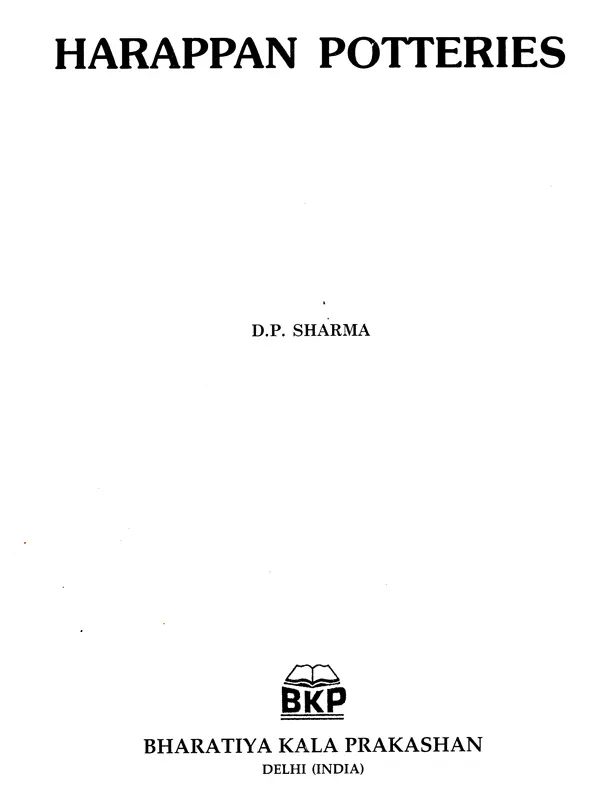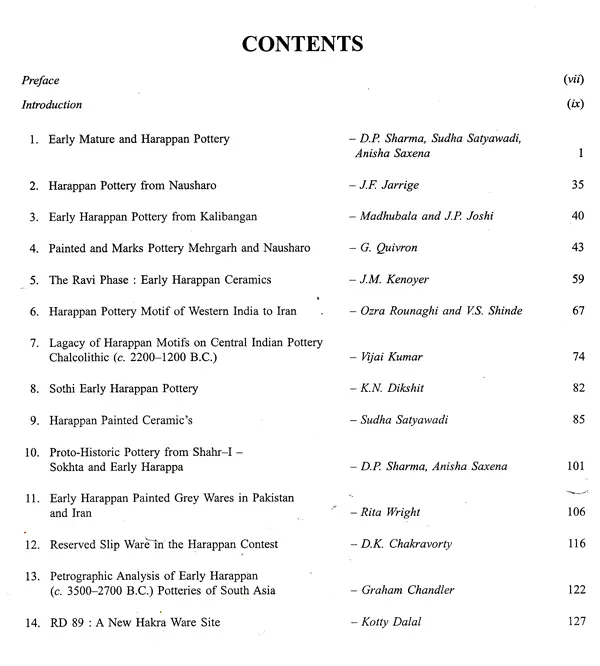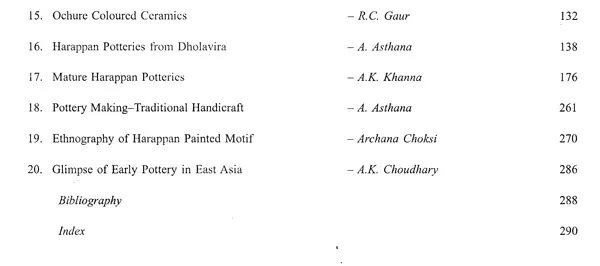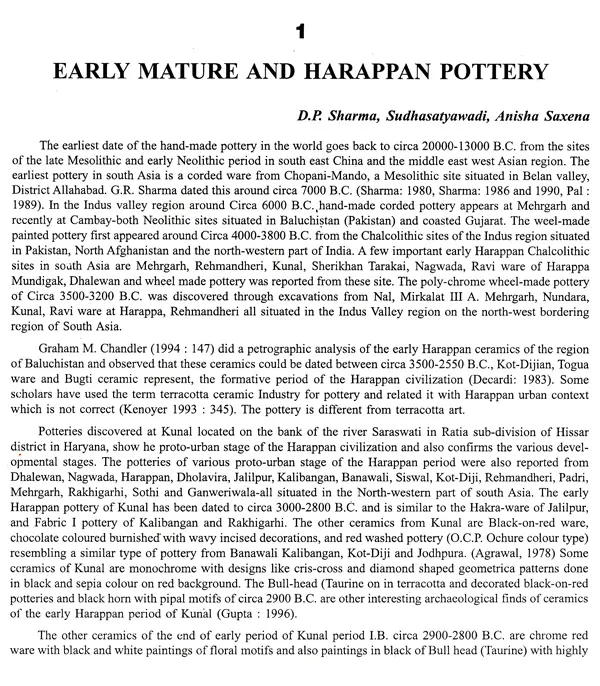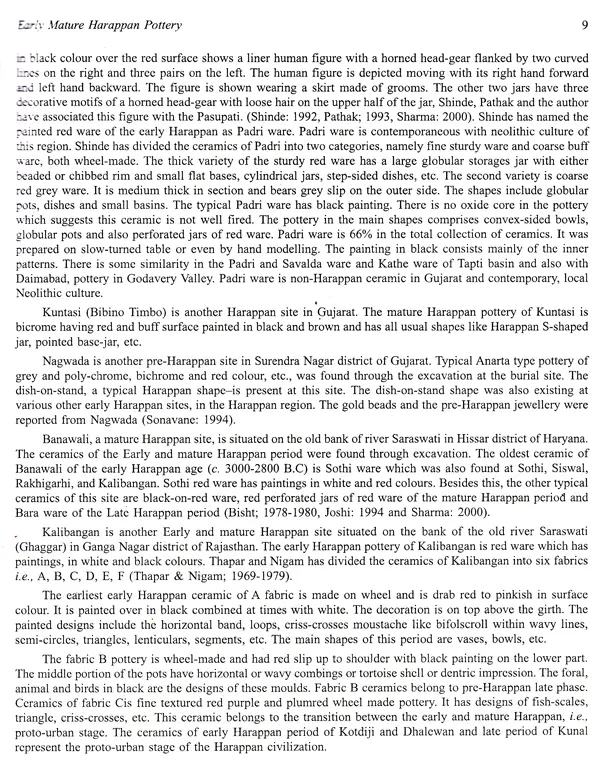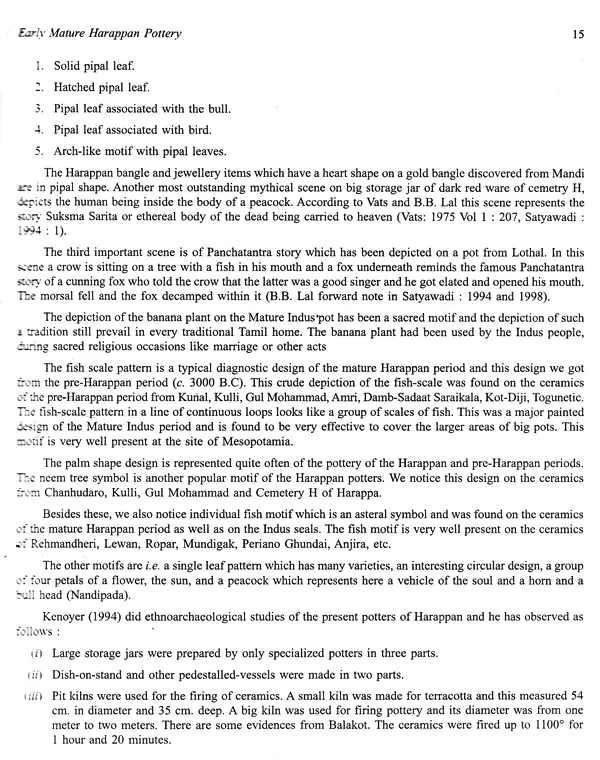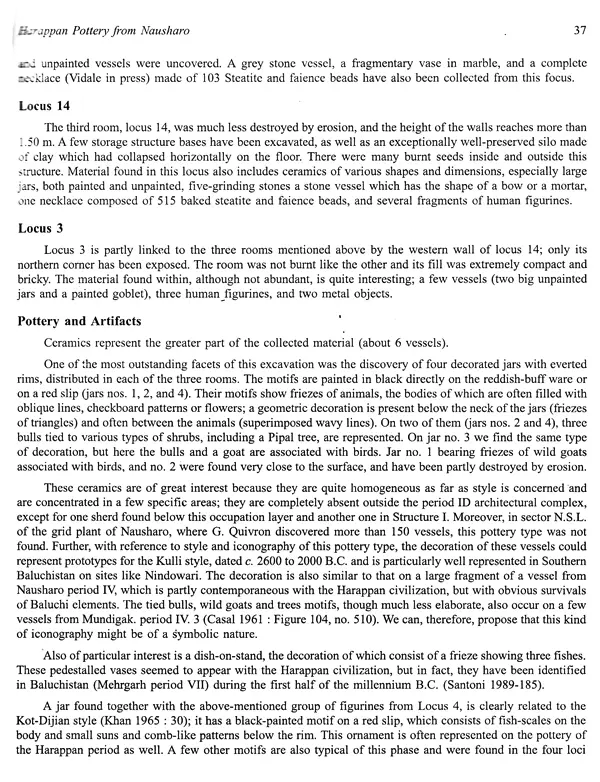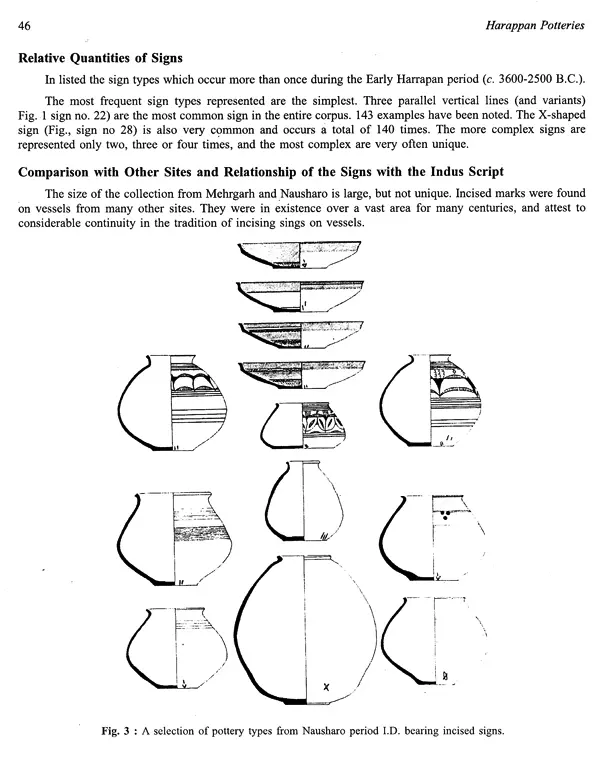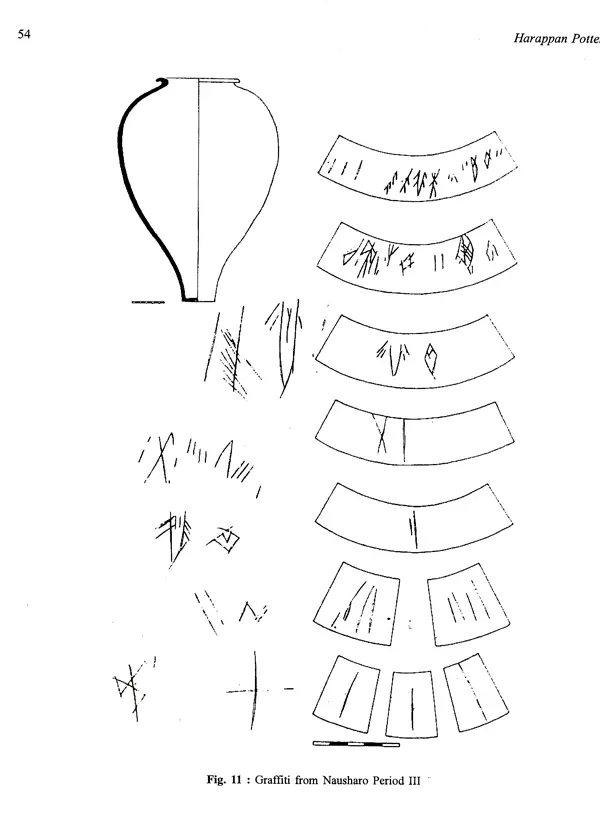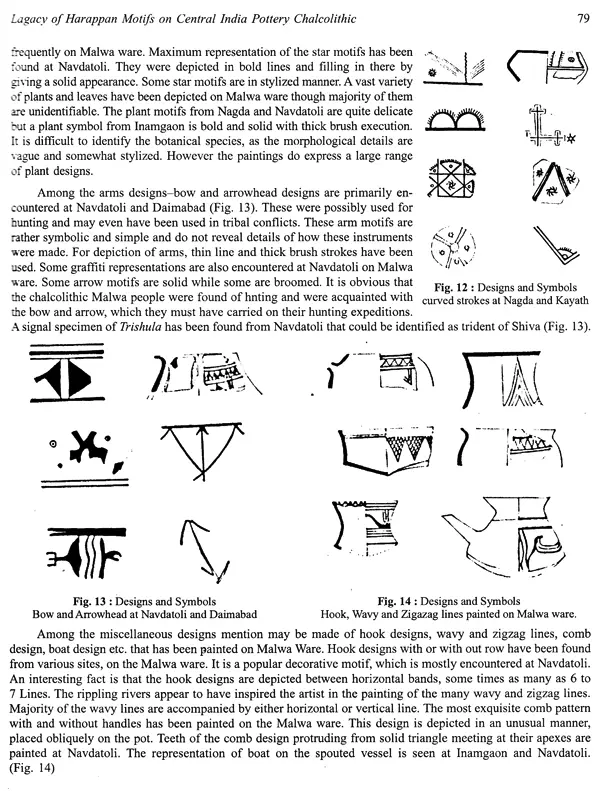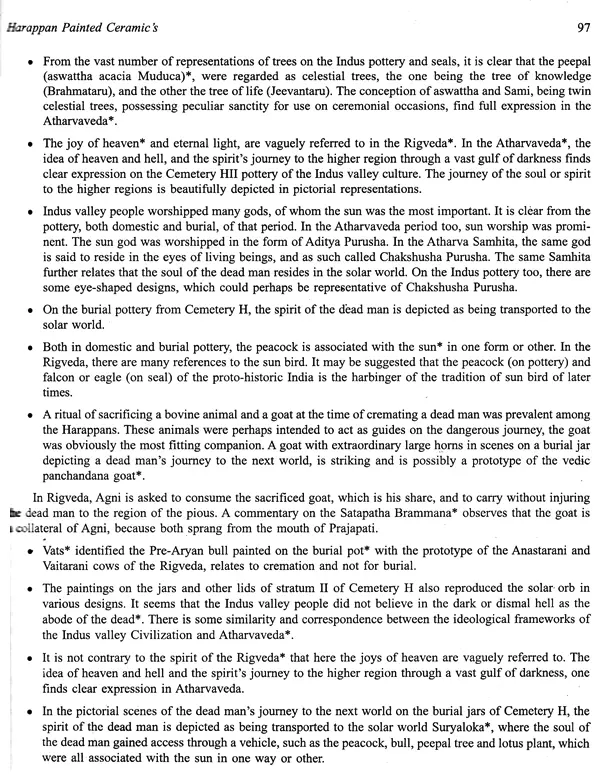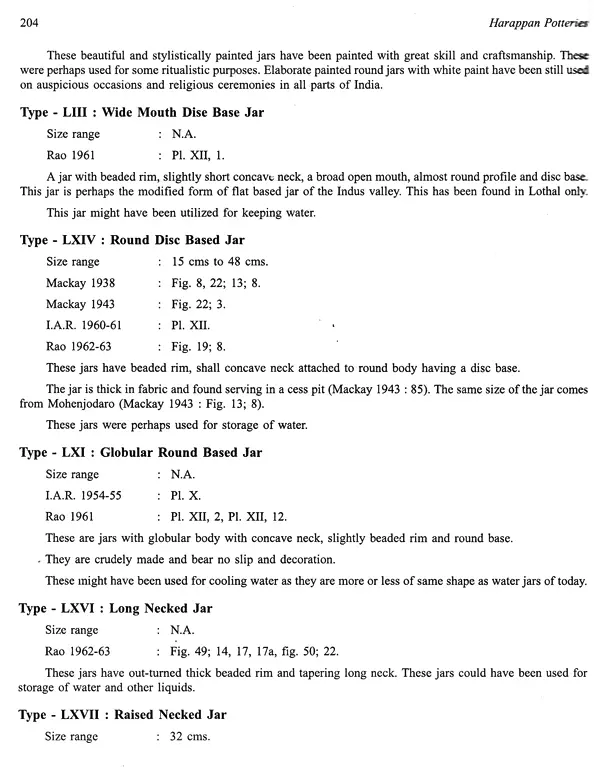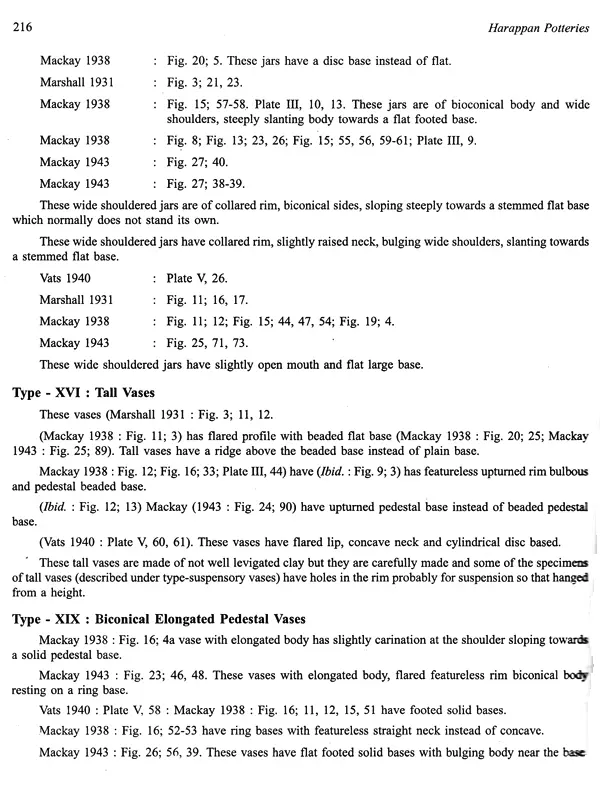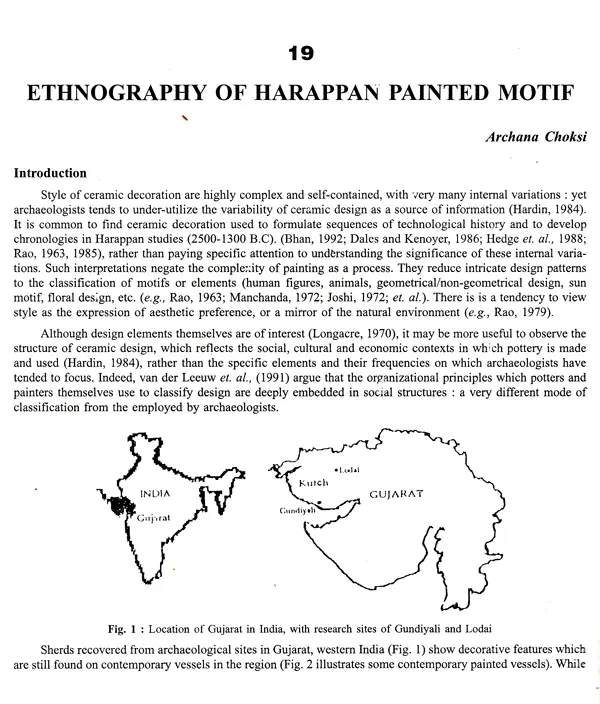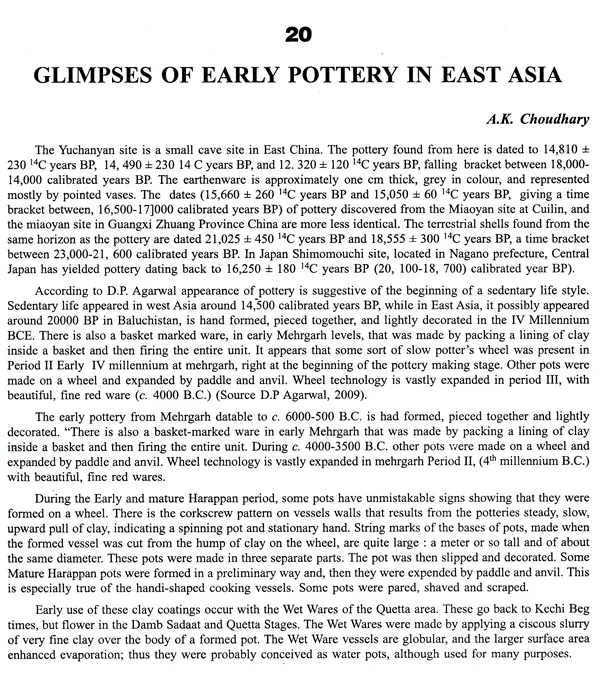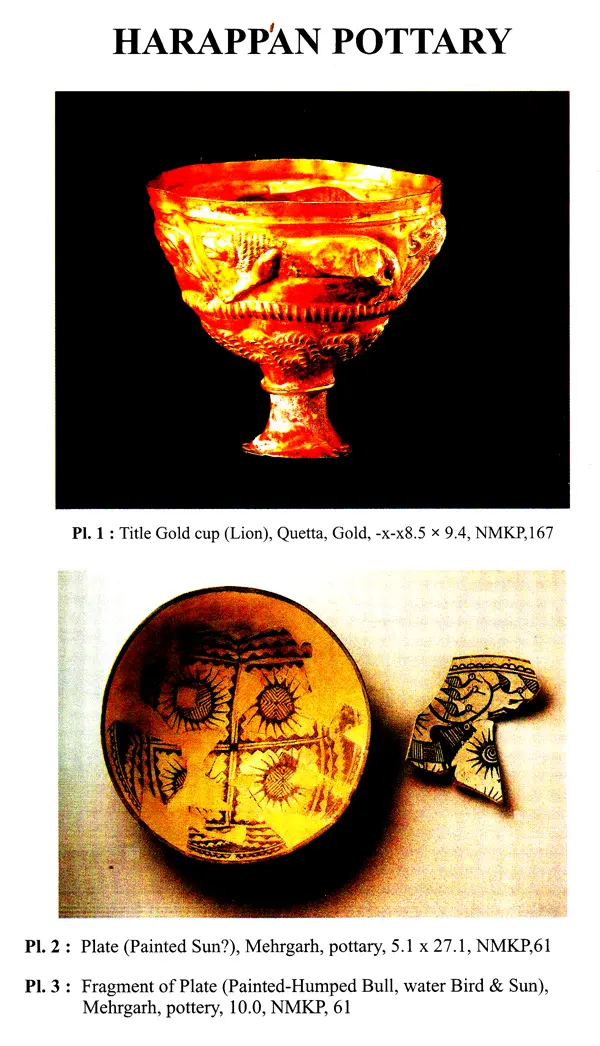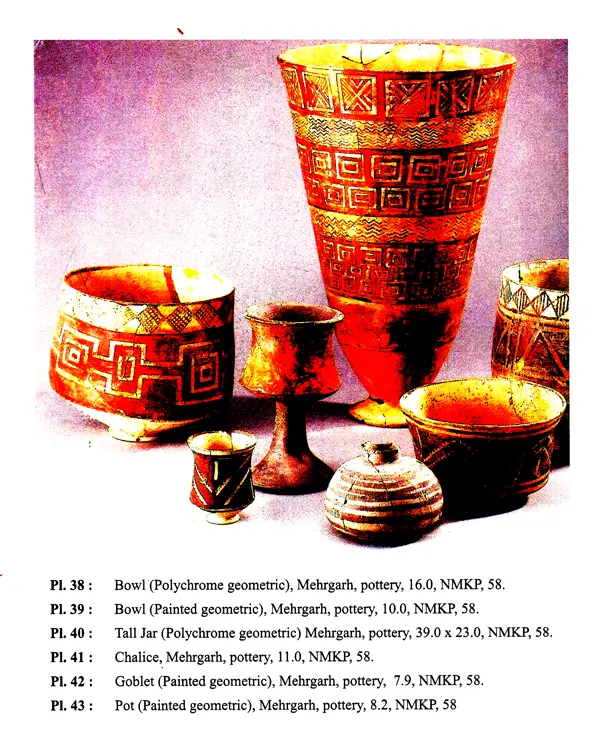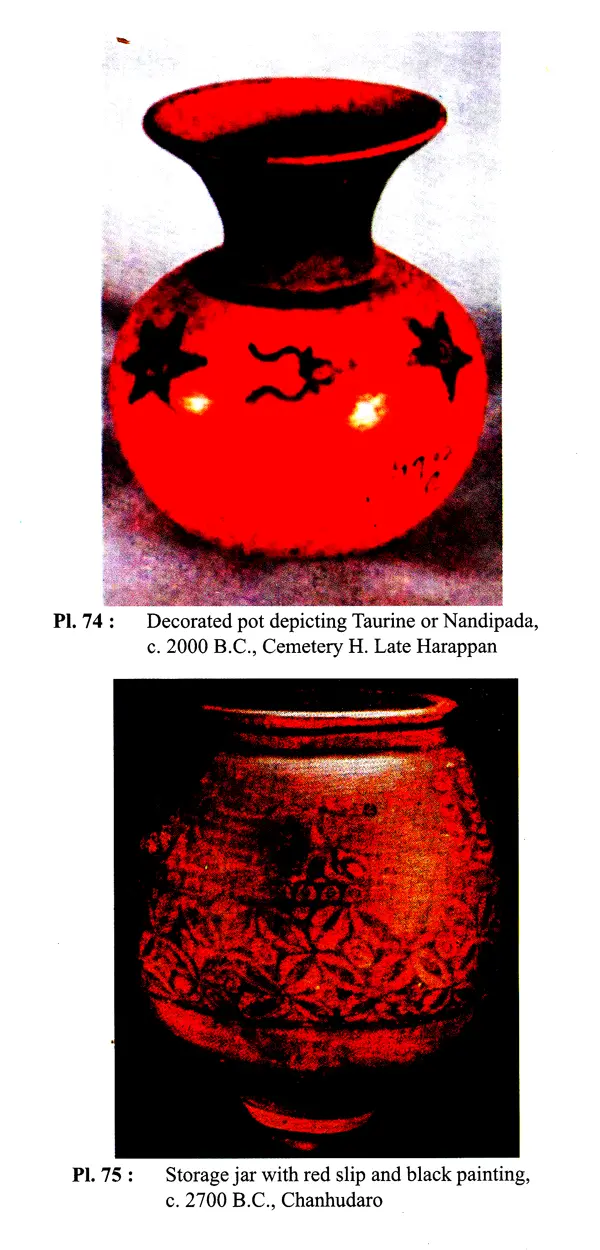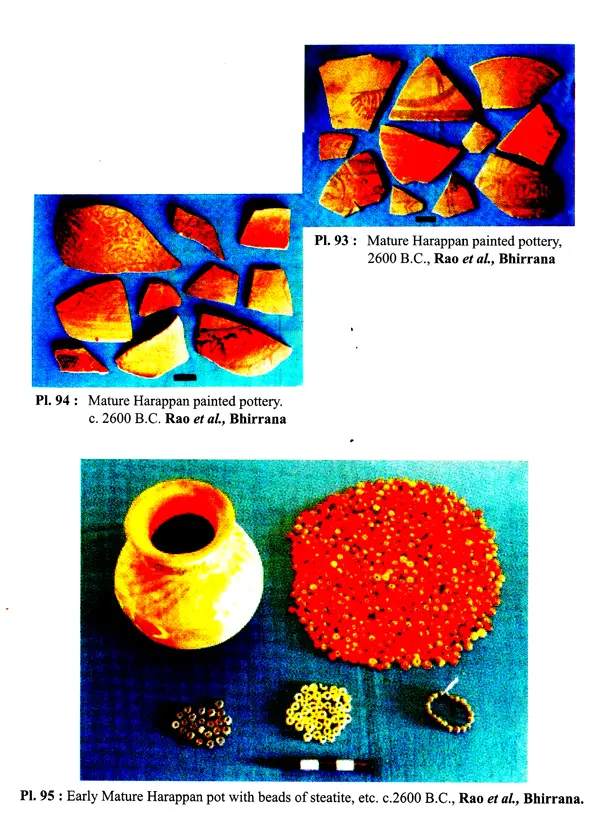
Harappan Potteries
Book Specification
| Item Code: | UAN401 |
| Author: | D. P. Sharma |
| Publisher: | Bharatiya Kala Prakashan |
| Language: | English |
| Edition: | 2010 |
| ISBN: | 9788180902611 |
| Pages: | 320 |
| Cover: | HARDCOVER |
| Other Details | 11.00 X 9.00 inch |
| Weight | 1.36 kg |
Book Description
According to D.P. Sharma, early Harappan pottery, which in wheel made first appeared around c. 3800 B.C. from copper age sites in Mehrgarh Baluchistan. Early Harappan pottery show regional variations in north-west part of South Asia.
Few important papers in this volume are of the editor, J.F. Jarrige, J.M. Kenoyer, Anisha Saxena, Sudha Satyawadi, A. Asthana, K.N. Dikshit, A.K. Khanna. A.K. Choudhary and Archana Choksi.
The Harappan houses were built mostly of bricks and sun on high platforms. The pattern of the civilization in certain respects was uniform as is evidenced not only from the seals, sealing, writings, beads, weights and mures, poltery etc. but also from the bricks and brick laying technique which are the same The linear measuring scale has been found at Lothal Kalibangan, Mohenjodu and Allahadino Manure Harappan sites like Harappa, Mohenjodaro and Kalibangan had each a citadel on high mound in the west and a fortifiat cheshad patterned lower town in the cast. The Dholavira town planning was having three principal divisions named as Acropolis (Cadet), middle town and lower town, which was surrounded by a rectangular massive stone forti Geation wall. The Great Bath tank ut Mohenjodaro shows the state of perfection reached in perfect building techniques. It is 39x23 feet in area and 8 feet deep.
The most beautiful of all the figurses found at Mohenjodaro are two small figures of a dancing girl in bronze. The famous stone bust of a bearded mun, clad in embroidered shawt with trefoil motif, now in the National Museum, Karachi, resembles the image of a priest. Similar type of a beadicw seated stone priest and Mongooses recently reported from Disolavits. They used gold and silver to make bracelets, necklaces, bangles, carrings, head ornaments and gindies. The Gold Jewellery of Mature Harappan period were reported from Mandi, Mohenjodaro, Baror Nindawari, Allahadino, Ralligarhi, Lothal, Kummer, Bhitrana Quenta, Farmcay Badly, Dholavira and Harappa.
The claim by some other scholars script is Proto-Brahmi and in Sanskrit language may also be correct. Direction of Harappan writing system was mostly from right to left and later on around 2000 BC (end of late Harappan) they started their system of writing from left to right.
The fire worship was a typical characteristic of mature Harappan. The calt of Siva and Saldi (mother goddess) was an important religion of mature Haruppun. Animal moveable heads, climbing monkeys, rattles and whistles were used for the amusement of kids. The Harappan were familiar with Yoga The mature Harappan Burials were of three type (1) extended (2) rectangular pot burial with bone and (3) circular or oval pot bunal mostly without bones. The Copper Hronze industry was un important industry of the mature Harappan. The Harappan were knowing copper casting and hammering technique. A tronze model of two-wheeled carts at Harappa, Chanhudaro, Mohenjodaro and Daimabad has confirmed that Harappan were using these for land transport. The flat-bottomed boats were used for transport in rivers and lakes. The discovery of a Harappan ploughed field from Kalibangan indicates the pattern of ploughing. The terracotta models of a plough from Banawali and Kaliban Suggest the shape of the ploughshare, which is not much different from the present ones. Around c. 2700-1900 B. C. the Harappan were having trade contacts with Mesopotamia and other regions of South Asia.
**Contents and Sample Pages**
